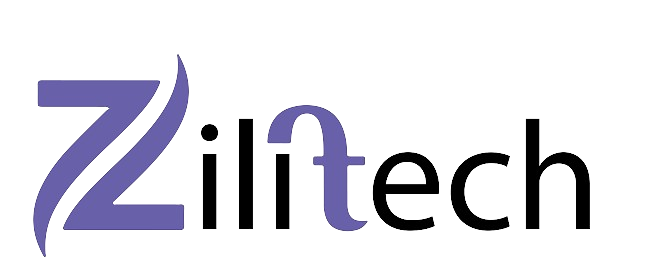Introduction
Managing a college’s faculty schedule is no small feat. With countless classes, office hours, meetings, and events, ensuring everything runs smoothly can be a logistical nightmare. Enter faculty scheduling tools. These digital solutions are designed to streamline and simplify the scheduling process, making it more efficient and less prone to errors. In this article, we’ll dive into the top college faculty scheduling tools available today, explore their features, and help you find the perfect fit for your institution.
What Are Faculty Scheduling Tools?
Faculty scheduling tools are software applications designed to assist colleges and universities in organizing and managing their faculty’s schedules. These tools help in coordinating classes, meetings, office hours, and other academic activities, ensuring that there are no conflicts and that resources are utilized optimally.
Types of Scheduling Tools
Scheduling tools come in various forms, from simple calendar apps to complex systems integrated with the institution’s existing infrastructure. Some are standalone applications, while others are part of a more extensive suite of educational management tools.
Key Features of Effective Scheduling Tools
When selecting a faculty scheduling tool, there are several key features to consider to ensure it meets your college’s needs:
User-friendly Interface
A good scheduling tool should be intuitive and easy to navigate. Faculty and administrative staff should be able to use it without extensive training.
Automation Capabilities
Automation is crucial for reducing the manual workload. The tool should be able to automate routine tasks such as sending reminders, updating schedules, and resolving conflicts.
Integration with Other Systems
The ability to integrate with other systems, such as student information systems (SIS) and learning management systems (LMS), is essential for a seamless scheduling experience.
Customization Options
Every college has unique needs, so the scheduling tool should offer customization options to tailor it to specific requirements.
Benefits of Using Faculty Scheduling Tools
Adopting a faculty scheduling tool can bring numerous benefits to a college:
Time-saving
By automating scheduling tasks, faculty and administrative staff can save significant time that can be better spent on other important activities.
Increased Accuracy
Manual scheduling is prone to errors. Scheduling tools reduce the risk of double-booking and other mistakes, ensuring a more accurate schedule.
Better Resource Management
Efficient scheduling helps in the optimal use of resources, such as classrooms and equipment, ensuring they are not under or over-utilized.
Enhanced Communication
Scheduling tools often come with features that facilitate better communication among faculty members, students, and administrative staff, ensuring everyone is on the same page.
Popular Faculty Scheduling Tools
There are several faculty scheduling tools available, each with its unique features and benefits. Let’s take a closer look at some of the most popular options:
Tool 1: ScheduleOnce
ScheduleOnce is a powerful scheduling tool designed to simplify the scheduling process for colleges.
- Features: ScheduleOnce offers robust features such as automated scheduling, calendar integration, and customizable booking forms.
- Pros and Cons: It is known for its user-friendly interface and excellent customer support. However, it may be on the pricier side for smaller institutions.
- Pricing: ScheduleOnce offers various pricing plans, starting from basic to premium, catering to different needs and budgets.
Tool 2: Acuity Scheduling
Acuity Scheduling is another popular choice for faculty scheduling.
- Features: It offers features like calendar syncing, appointment reminders, and customizable scheduling options.
- Pros and Cons: Acuity is praised for its flexibility and ease of use. On the downside, it may require some time to set up and customize initially.
- Pricing: Acuity Scheduling has several pricing tiers, making it accessible for both small and large institutions.
Tool 3: Google Calendar
Google Calendar is a widely used tool that can be effectively utilized for faculty scheduling.
- Features: Google Calendar offers seamless integration with other Google Workspace tools, shared calendars, and event reminders.
- Pros and Cons: It’s free to use and easy to integrate with other systems. However, it lacks some advanced features found in dedicated scheduling tools.
- Pricing: Google Calendar is free for individuals and comes with Google Workspace subscriptions for institutions.
Tool 4: Doodle
Doodle is a simple yet effective scheduling tool that can help coordinate faculty schedules.
- Features: Doodle offers features like poll-based scheduling, calendar integration, and automatic reminders.
- Pros and Cons: It’s very user-friendly and quick to set up. However, its simplicity means it may lack some advanced scheduling features.
- Pricing: Doodle offers a free version with basic features and premium plans for more advanced functionalities.
Tool 5: Microsoft Outlook
Microsoft Outlook is a comprehensive tool that can be used for scheduling purposes.
- Features: Outlook offers calendar management, email integration, and meeting scheduling features.
- Pros and Cons: It’s part of the Microsoft Office suite, making it easy to integrate with other Microsoft tools. However, it may be overwhelming for users who only need basic scheduling features.
- Pricing: Microsoft Outlook is included in Microsoft 365 subscriptions, which have various pricing plans.
How to Choose the Right Scheduling Tool for Your College
Selecting the right scheduling tool involves several steps:
Assessing Your Needs
Determine what your college requires from a scheduling tool. Consider factors like the number of faculty members, the complexity of schedules, and the need for integration with other systems.
Evaluating Features
Compare the features of different tools to see which ones align best with your needs. Look for features like automation, integration, and customization.
Considering Budget
Budget is a critical factor. Ensure the tool you choose offers the best value for money and fits within your institution’s budget.
Implementation Tips
Once you’ve chosen a scheduling tool, proper implementation is key to success:
Training Staff
Provide comprehensive training to ensure that all users are comfortable with the new tool.
Integration with Existing Systems
Ensure that the scheduling tool integrates seamlessly with your existing systems to avoid disruptions.
Continuous Evaluation and Feedback
Regularly evaluate the tool’s performance and gather feedback from users to make necessary adjustments and improvements.
Case Studies
College A’s Success Story
College A implemented a faculty scheduling tool and saw a 30% reduction in scheduling conflicts and a 20% increase in administrative efficiency.
College B’s Success Story
College B used a scheduling tool to streamline their scheduling process, resulting in improved resource management and better faculty satisfaction.
Future Trends in Faculty Scheduling Tools
The future of faculty scheduling tools looks promising with several emerging trends:
AI and Machine Learning
AI and machine learning are being integrated into scheduling tools to predict and optimize schedules based on past data.
Mobile Accessibility
With the increasing use of smartphones, mobile-friendly scheduling tools are becoming more prevalent.
Enhanced Data Analytics
Advanced data analytics are being used to provide insights into scheduling patterns and help in making informed decisions.
Conclusion
In conclusion, faculty scheduling tools are indispensable for modern colleges. They offer numerous benefits, from saving time to improving accuracy and communication. By carefully selecting the right tool and implementing it effectively, colleges can enhance their scheduling processes and overall efficiency.
FAQs
What are faculty scheduling tools?
Faculty scheduling tools are software applications designed to help colleges and universities organize and manage their faculty’s schedules efficiently.
How do scheduling tools benefit colleges?
Scheduling tools save time, reduce errors, improve resource management, and enhance communication among faculty and administrative staff.
What features should I look for in a scheduling tool?
Look for features such as a user-friendly interface, automation capabilities, integration with other systems, and customization options.
How much do scheduling tools cost?
The cost of scheduling tools varies widely, from free options like Google Calendar to premium tools with advanced features.
Can scheduling tools integrate with other systems?
Yes, many scheduling tools offer integration with other systems such as student information systems and learning management systems.




